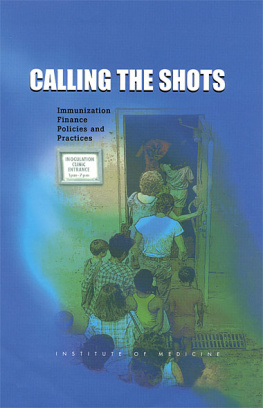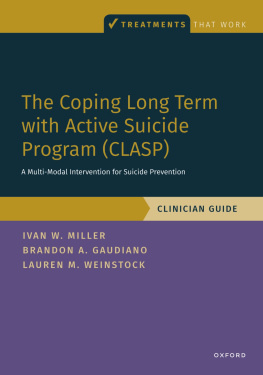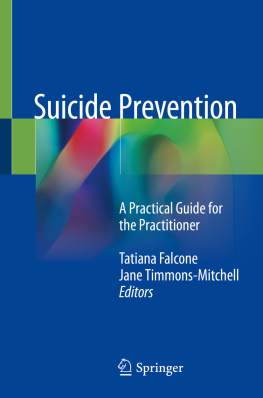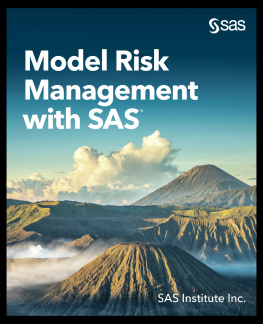Institute of Medicien - Risk Factors For Suicide: summary of a workshop
Here you can read online Institute of Medicien - Risk Factors For Suicide: summary of a workshop full text of the book (entire story) in english for free. Download pdf and epub, get meaning, cover and reviews about this ebook. year: 2001, publisher: NATIONAL ACADEMY PRESS, genre: Home and family. Description of the work, (preface) as well as reviews are available. Best literature library LitArk.com created for fans of good reading and offers a wide selection of genres:
Romance novel
Science fiction
Adventure
Detective
Science
History
Home and family
Prose
Art
Politics
Computer
Non-fiction
Religion
Business
Children
Humor
Choose a favorite category and find really read worthwhile books. Enjoy immersion in the world of imagination, feel the emotions of the characters or learn something new for yourself, make an fascinating discovery.

- Book:Risk Factors For Suicide: summary of a workshop
- Author:
- Publisher:NATIONAL ACADEMY PRESS
- Genre:
- Year:2001
- Rating:4 / 5
- Favourites:Add to favourites
- Your mark:
- 80
- 1
- 2
- 3
- 4
- 5
Risk Factors For Suicide: summary of a workshop: summary, description and annotation
We offer to read an annotation, description, summary or preface (depends on what the author of the book "Risk Factors For Suicide: summary of a workshop" wrote himself). If you haven't found the necessary information about the book — write in the comments, we will try to find it.
Risk Factors For Suicide: summary of a workshop — read online for free the complete book (whole text) full work
Below is the text of the book, divided by pages. System saving the place of the last page read, allows you to conveniently read the book "Risk Factors For Suicide: summary of a workshop" online for free, without having to search again every time where you left off. Put a bookmark, and you can go to the page where you finished reading at any time.
Font size:
Interval:
Bookmark:
Risk Factors For Suicide
summary of a workshop
prepared by
Sara K.Goldsmith
Board on Neuroscience and Behavioral Health
INSTITUTE OF MEDICINE
NATIONAL ACADEMY PRESS
Washington, D.C.
NATIONAL ACADEMY PRESS
2101 Constitution Avenue, N.W.
Washington, DC 20418
NOTICE: The project that is the subject of this report was approved by the Governing Board of the National Research Council, whose members are drawn from the councils of the National Academy of Sciences, the National Academy of Engineering, and the Institute of Medicine. The members of the committee responsible for the report were chosen for their special competences and with regard for appropriate balance.
Support for this project was provided by the Centers for Disease Control and Prevention, the National Institute of Mental Health, the National Institute on Drug Abuse, the National Institute on Alcohol Abuse and Alcoholism, the Substance Abuse and Mental Health Services Administration and the Veterans Administration. The content of this publication does not necessarily reflect the views or policies of the Department of Health and Human Services, nor does the mention of trade names, commercial products, or organizations imply endorsement by the U.S. government. In general, any opinions, findings, conclusions, or recommendations expressed in this publication are those of the author(s) and do not necessarily reflect the view of the organizations or agencies that provided support for this project.
International Standard Book Number0-309-07625-0
Additional copies of this report are available for sale from the National Academy Press, 2101 Constitution Avenue, N.W., Box 285, Washington, D.C. 20055. Call (800) 6246242 or (202) 3343313 (in the Washington metropolitan area). The full text of this report is available online at
http://www.nap.edu.
For more information about the Institute of Medicine, visit the IOM home page at: www.iom.edu.
The serpent has been a symbol of long life, healing, and knowledge among almost all cultures and religions since the beginning of recorded history. The serpent adopted as a logotype by the Institute of Medicine is a relief carving from ancient Greece, now held by the Staatliche Museen in Berlin.
ISBN 0-309-18324-3 e-pub ISBN
Knowing is not enough; we must apply.
Willing is not enough; we must do.
Goethe

INSTITUTE OF MEDICINE
Shaping the Future for Health
National Academy of Sciences
National Academy of Engineering
Institute of Medicine
National Research Council
The National Academy of Sciences is a private, nonprofit, self-perpetuating society of distinguished scholars engaged in scientific and engineering research, dedicated to the furtherance of science and technology and to their use for the general welfare. Upon the authority of the charter granted to it by the Congress in 1863, the Academy has a mandate that requires it to advise the federal government on scientific and technical matters. Dr. Bruce M.Alberts is president of the National Academy of Sciences.
The National Academy of Engineering was established in 1964, under the charter of the National Academy of Sciences, as a parallel organization of outstanding engineers. It is autonomous in its administration and in the selection of its members, sharing with the National Academy of Sciences the responsibility for advising the federal government. The National Academy of Engineering also sponsors engineering programs aimed at meeting national needs, encourages education and research, and recognizes the superior achievements of engineers. Dr. Wm. A.Wulf is president of the National Academy of Engineering.
The Institute of Medicine was established in 1970 by the National Academy of Sciences to secure the services of eminent members of appropriate professions in the examination of policy matters pertaining to the health of the public. The Institute acts under the responsibility given to the National Academy of Sciences by its congressional charter to be an adviser to the federal government and, upon its own initiative, to identify issues of medical care, research, and education. Dr. Kenneth I.Shine is president of the Institute of Medicine.
The National Research Council was organized by the National Academy of Sciences in 1916 to associate the broad community of science and technology with the Academys purposes of furthering knowledge and advising the federal government. Functioning in accordance with general policies determined by the Academy, the Council has become the principal operating agency of both the National Academy of Sciences and the National Academy of Engineering in providing services to the government, the public, and the scientific and engineering communities. The Council is administered jointly by both Academies and the Institute of Medicine. Dr. Bruce M. Alberts and Dr. Wm. A.Wulf are chairman and vice chairman, respectively, of the National Research Council.
WILLIAM E.BUNNEY, JR., M.D., (Co-Chair),
University of California, Irvine, California
ARTHUR M.KLEINMAN, M.D., (Co-Chair),
Harvard University, Cambridge, Massachusetts
CARL C.BELL, M.D.,
Community Mental Health Council and University of Illinois, Chicago, Illinois
DAVID A.BRENT, M.D.,
Western Psychiatric Institute and Clinic, University of Pittsburgh, Pittsburgh, Pennsylvania
LEONA EGGERT, PH.D.,
FAAN, University of Washington, Seattle, Washington
JAN FAWCETT, M.D.,
Rush Institute for Mental Well-Being, Chicago, Illinois
ROBERT D.GIBBONS, PH.D.,
University of Illinois, Chicago, Illinois
KAY REDFIELD JAMISON, PH.D.,
The Johns Hopkins University School of Medicine, Baltimore, Maryland
JILL E.KORBIN, PH.D.,
Case Western Reserve University, Cleveland, Ohio
J.JOHN MANN, M.D.,
New York State Psychiatric Institute and Columbia University, New York, New York
PHILIP A.MAY, PH.D.,
University of New Mexico, Albuquerque, New Mexico
CHARLES F.REYNOLDS, III, M.D.,
Western Psychiatric Institute and Clinic, University of Pittsburgh, Pittsburgh, Pennsylvania
MING T.TSUANG, M.D., PH.D.,
Harvard Medical School, Boston, Massachusetts
RICHARD G.FRANK, PH.D.,
(liaison to the Board on Neuroscience and Behavioral Health), Harvard Medical School, Boston, Massachusetts
Staff
TERRY C.PELLMAR, PH.D., Board Director,
NBH
SARA K.GOLDSMITH, PH.D., Study Director
SANDRA P. AU, Research Associate
ALLISON M.PANZER, Project Assistant
MIRIAM DAVIS, PH.D., Consultant
ANN M.GRAYBIEL, PH.D., (Chair),
Massachusetts Institute of Technology, Cambridge, Massachusetts
KENNETH B.WELLS, M.D., M.P.H., (Vice-Chair),
Neuropsychiatric Institute, University of California, Los Angeles, California
NANCY E.ADLER, PH.D.,
University of California, San Francisco, California
RICHARD J.BONNIE, LL.B.,
University of Virginia School of Law, Charlottesville, Virginia
WILLIAM E.BUNNEY, M.D.,
University of California, Irvine, California
Font size:
Interval:
Bookmark:
Similar books «Risk Factors For Suicide: summary of a workshop»
Look at similar books to Risk Factors For Suicide: summary of a workshop. We have selected literature similar in name and meaning in the hope of providing readers with more options to find new, interesting, not yet read works.
Discussion, reviews of the book Risk Factors For Suicide: summary of a workshop and just readers' own opinions. Leave your comments, write what you think about the work, its meaning or the main characters. Specify what exactly you liked and what you didn't like, and why you think so.





